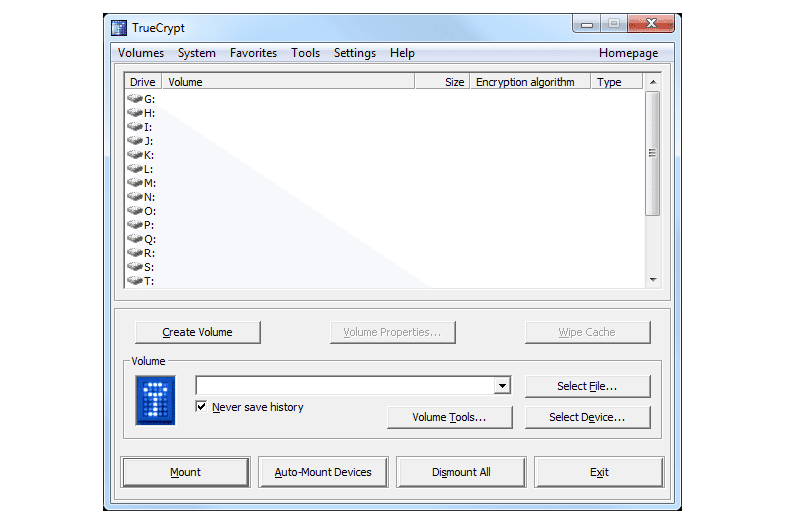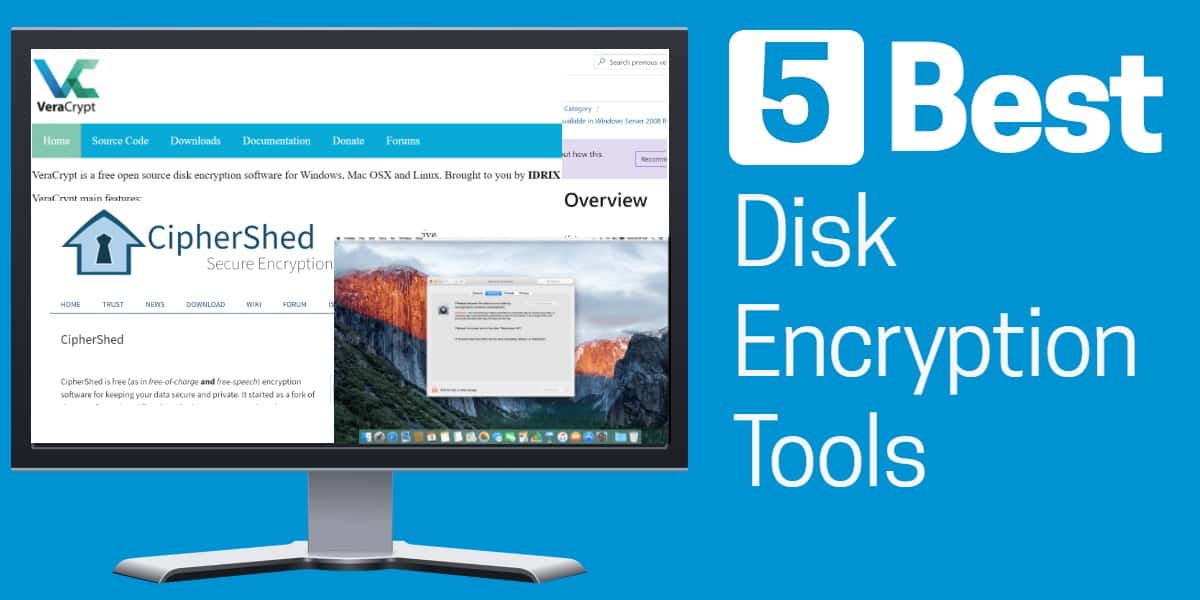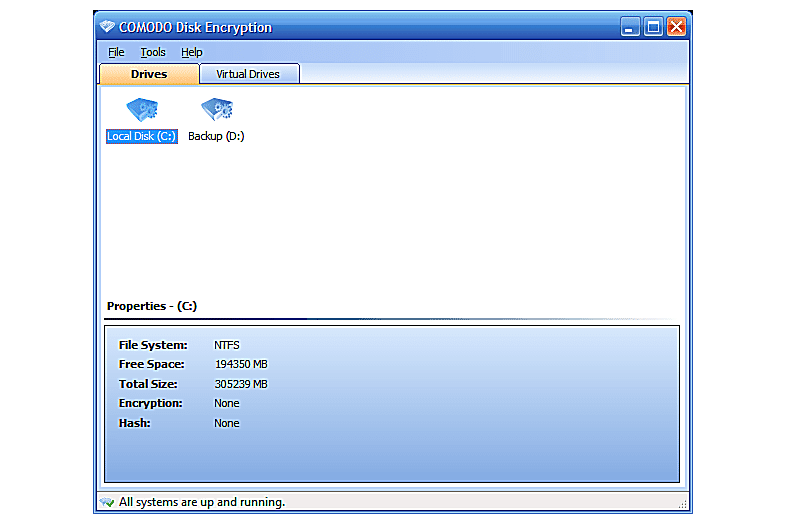Disk encryption software sets the stage for this enthralling narrative, offering readers a glimpse into a story that is rich in detail and brimming with originality. From explaining its significance in cybersecurity to exploring real-world scenarios, this topic delves into the realm of data protection with cutting-edge technology.
Overview of Disk Encryption Software

Disk encryption software is a type of security tool that encrypts the data stored on a computer’s hard drive or external storage devices. Its primary purpose is to protect sensitive information from unauthorized access by converting it into unreadable code that can only be deciphered with the correct decryption key.
Popular Disk Encryption Software Tools
- VeraCrypt: An open-source disk encryption tool that supports various encryption algorithms and provides strong protection for data.
- BitLocker: Developed by Microsoft, BitLocker offers full disk encryption for Windows operating systems and integrates seamlessly with the OS.
- FileVault: Designed for macOS, FileVault encrypts the entire system drive to safeguard data against potential threats.
Importance of Disk Encryption Software in Cybersecurity
Disk encryption software plays a crucial role in cybersecurity by ensuring that sensitive data remains secure, even if a device falls into the wrong hands. It helps organizations comply with data protection regulations and prevents unauthorized access to confidential information.
Preventing Data Breaches with Disk Encryption Software
- In the event of a lost or stolen laptop, disk encryption software can prevent unauthorized individuals from accessing sensitive business data stored on the device.
- If a cybercriminal gains access to a company’s server, encrypted files would be unreadable without the decryption key, reducing the risk of a data breach.
Types of Disk Encryption

Disk encryption comes in two main types: full disk encryption and file-based encryption. Each type has its own set of advantages and disadvantages, along with specific use cases and key management methods.
Full Disk Encryption vs. File-Based Encryption
- Full Disk Encryption: Full disk encryption encrypts the entire disk, including the operating system and all data stored on it. This type of encryption provides comprehensive protection for all files and folders on the disk.
- Advantages:
- Ensures all data on the disk is protected
- Suitable for devices with sensitive information
- Streamlined encryption process for the entire disk
- Disadvantages:
- Can impact system performance due to continuous encryption/decryption processes
- If the encryption key is compromised, all data on the disk is at risk
- Common Industries: Full disk encryption is commonly used in sectors such as healthcare, finance, and government where data security and compliance are paramount.
- Key Management: In full disk encryption, the encryption keys are typically managed centrally by an organization’s IT department to ensure secure access and protection.
- File-Based Encryption: File-based encryption allows users to selectively encrypt individual files or folders on a disk. This provides more flexibility in choosing which data to encrypt.
- Advantages:
- Offers granular control over encryption for specific files or folders
- Less impact on system performance compared to full disk encryption
- Users can encrypt only sensitive information, leaving non-sensitive data unencrypted
- Disadvantages:
- Requires manual selection and management of encrypted files
- Potential risk of leaving important data unencrypted if not properly managed
- Common Industries: File-based encryption is often used in industries such as legal services, research, and education where specific files or projects need encryption while others may not.
- Key Management: In file-based encryption, users are responsible for managing encryption keys for each encrypted file or folder, which can lead to decentralized key storage and potential security risks.
Features and Functionality
When selecting disk encryption software, users should consider key features that enhance security and usability. It is essential to understand the role of password strength, encryption algorithms, and the difference between hardware-based and software-based encryption.
Key Features of Disk Encryption Software
- Strong Encryption Algorithms: Look for software that offers advanced encryption algorithms like AES (Advanced Encryption Standard) with key lengths of 128-bit or higher for robust protection.
- Multi-factor Authentication: Choose software that supports multi-factor authentication methods such as passwords, biometrics, smart cards, or tokens to strengthen access control.
- Centralized Management: Opt for solutions that provide centralized management capabilities for easier deployment, monitoring, and policy enforcement across multiple devices.
- Automatic Encryption: Select software that offers automatic encryption of files and folders to ensure all sensitive data is protected without manual intervention.
- Secure File Shredding: Consider software that includes secure file shredding features to permanently delete data from disks without the possibility of recovery.
Password Strength and Complexity
Password strength plays a crucial role in ensuring the security of encrypted disks. Users should create complex passwords that are difficult to guess or crack. It is recommended to use a combination of uppercase and lowercase letters, numbers, and special characters. Additionally, users should avoid using easily guessable information like birthdays or names.
Impact of Encryption Algorithms on Performance
The encryption algorithm used by disk encryption software can impact performance. Complex algorithms may require more computational resources, potentially slowing down data access and transfer speeds. However, modern encryption algorithms are optimized for performance while maintaining high security standards.
Hardware-based vs. Software-based Encryption Performance
Hardware-based encryption, often found in self-encrypting drives (SEDs), offloads encryption and decryption processes to dedicated hardware components, resulting in minimal impact on system performance. Software-based encryption, on the other hand, relies on the computer’s CPU for encryption and decryption, which can lead to a slight performance overhead. However, advancements in software optimization have narrowed the performance gap between hardware-based and software-based encryption solutions.
Implementation and Best Practices

When setting up disk encryption software on your computer, it is important to follow a step-by-step process to ensure proper implementation. Additionally, managing encryption keys securely, regular updates, and maintenance are crucial for the effectiveness of disk encryption software. Here are some best practices and tips to consider:
Setting Up Disk Encryption Software
- Begin by choosing a reputable disk encryption software that meets your security needs.
- Follow the installation instructions provided by the software vendor carefully.
- During setup, create a strong password or passphrase for encryption keys.
- Encrypt the entire disk or specific files/folders based on your requirements.
Managing Encryption Keys Securely
- Store encryption keys in a secure location, separate from the encrypted data.
- Consider using a hardware security module (HSM) for added protection of encryption keys.
- Regularly rotate encryption keys and update passwords to enhance security.
Importance of Regular Updates and Maintenance
- Keep your disk encryption software up to date with the latest patches and security updates.
- Regularly check for software updates and apply them promptly to address any vulnerabilities.
- Perform routine maintenance tasks such as disk checks and software scans to ensure optimal performance.
Tips for Troubleshooting Common Issues
- If you encounter performance issues, check for conflicting software or background processes that may be affecting the encryption process.
- Ensure that your system meets the minimum requirements for the disk encryption software to function correctly.
- If you forget your encryption key or password, follow the recovery process provided by the software to regain access to your data.
Epilogue
In conclusion, disk encryption software stands as a crucial tool in safeguarding sensitive information from unauthorized access, ensuring data integrity and confidentiality. This discussion has shed light on the importance of encryption in the digital age, emphasizing the need for robust security measures to mitigate cyber threats.
FAQ Summary
What is the difference between full disk encryption and file-based encryption?
Full disk encryption encrypts an entire disk, while file-based encryption encrypts individual files or folders.
How do encryption algorithms impact the performance of disk encryption software?
Encryption algorithms can affect the speed and efficiency of disk encryption processes, with some algorithms being faster but less secure than others.
What are the best practices for managing encryption keys securely?
Securely storing encryption keys, regularly updating them, and implementing strong access controls are key practices for managing encryption keys.
